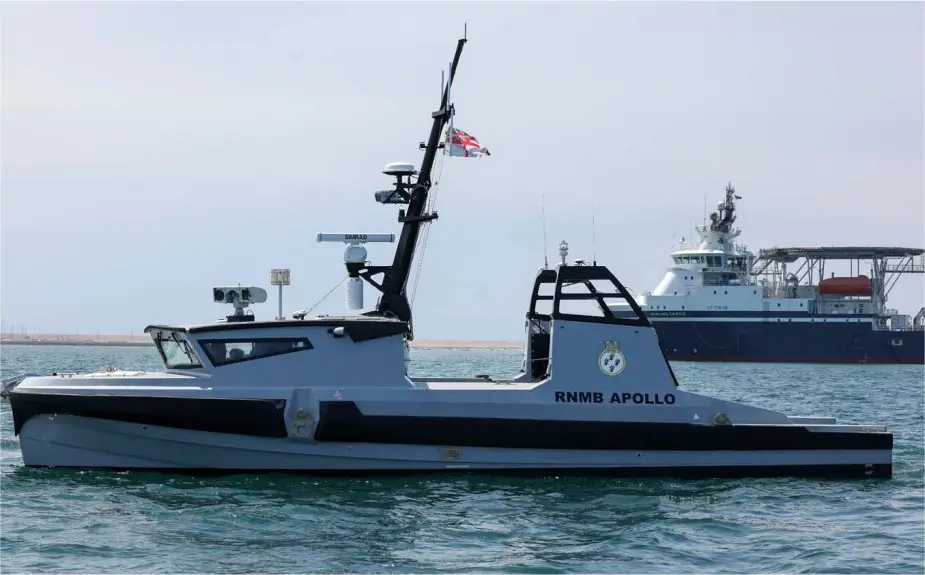UK embraces Autonomous Systems for enhanced mine countermeasures.
According to information published by the UK MoD on July 5, 2023, in a key progression for UK mine countermeasure initiatives, autonomous seafaring crafts were tested alongside a principal minehunting 'mothership' in their inaugural combined examination.
Follow Navy Recognition on Google News at this link
 RNMS Apollo and RFA Stirling Castle. (Picture source: UK MoD)
RNMS Apollo and RFA Stirling Castle. (Picture source: UK MoD)
The trio of vessels met with RFA Stirling Castle in Portland, Dorset, to undergo a sequence of assessments as part of the navy's shift towards self-navigating minehunting technologies.
The Royal Navy's Motor Boats - Apollo, Hydra, and Hazard - conducted maneuvers off the southern coast, as an integral element of the initial onboarding tests with the newly acquired Royal Fleet Auxiliary ship. This examination was conducted collaboratively with Defence Equipment & Support (DE&S), the procurement branch of the Ministry of Defence.
The adoption of autonomous and unmanned equipment minimizes risks to naval staff by maintaining their distance from the minefields, entrusting robotic systems with the task. This also facilitates more comprehensive sea surveys.
He went on to elaborate that the RFA Stirling Castle, after experiencing a rapid acquisition and delivery phase earlier in the year, has recently incorporated her first autonomous mine countermeasure systems.
It was also expressed that there is an expectation for continuous deployment and operational preparedness of Maritime Autonomous Systems in the forthcoming months.
The Maritime Autonomous Systems Trials Team (MASTT) of the navy embarked on Stirling Castle to supervise the week-long trials and were satisfied with the initial integration of the ship with the autonomous vessels.
The Stirling Castle was inducted into the Royal Auxiliary Fleet to serve as a 'mothership' for autonomous minehunting systems. Upon becoming operational, the ship will dispatch and retrieve the crafts and evaluate the data they collect while searching domestic waters for mines and submerged explosives.
By doing so, the ship and the autonomous vessels will gradually supersede traditional mine countermeasure vessels, exploiting advanced payloads like towed sonars and remotely operated neutralization systems from a Remote Command Centre.
RFA Stirling Castle
The vessel has a gross tonnage of 5,840, a net tonnage of 1,783, a deadweight tonnage of 4,600, and a displacement of 6,000 tonnes. In terms of physical dimensions, the ship measures 96.8 meters in length, 20.0 meters in width (beam), and 6.0 meters in draught.
Under the hood, RFA Stirling Castle is powered by four Bergen Engines C25:33L-6 diesel engines, each with an output of 2,000 kW or 2,700 hp. She also features two Kongsberg azimuth thrusters, each providing 3,500 kW or 4,700 hp, and three Kongsberg bow thrusters, each producing 1,882 kW or 2,524 hp. The ship can house up to 100 crew members. Additionally, it is equipped with a helipad, adding to its versatile capabilities.






















